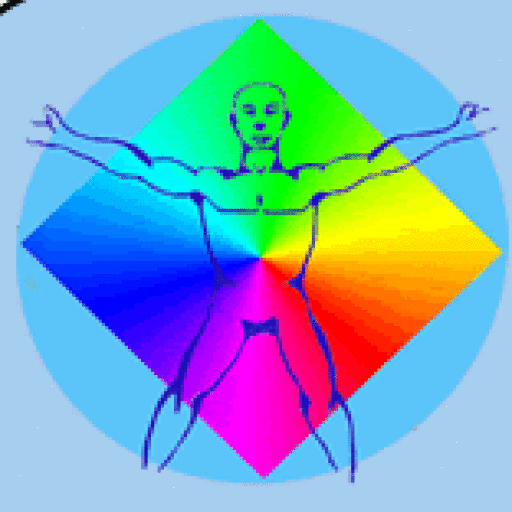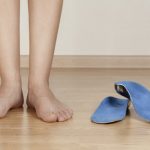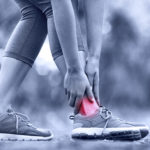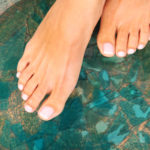What are biomechanics?
 Put simply it’s the way the joints, muscles and, tendons, work together during the gait cycle to achieve efficient movement during walking and running. The feet have a great influence on movement and alignment of bones and joints above the feet. A good analogy is the footings or foundations of a house; if these are faulty everything above will be too! Movement during the gait cycle requires co ordination and proper alignment if it is to be efficient and pain free.
Put simply it’s the way the joints, muscles and, tendons, work together during the gait cycle to achieve efficient movement during walking and running. The feet have a great influence on movement and alignment of bones and joints above the feet. A good analogy is the footings or foundations of a house; if these are faulty everything above will be too! Movement during the gait cycle requires co ordination and proper alignment if it is to be efficient and pain free.
Podiatrists are very well equipped to understand the concepts of biomechanics as a large part of their training involves the study of human biomechanics. Not just feet!
What can go wrong?
 A common problem and a good example to explain some of the issues that can come about from faulty biomechanics is excessive foot pronation commonly known as ‘flat feet’. Foot pronation can cause a myriad of problems further up in the body. With foot pronation the leg is forced to internally rotate which leads to faulty alignment of the ankle, knee, hips, and spine.
A common problem and a good example to explain some of the issues that can come about from faulty biomechanics is excessive foot pronation commonly known as ‘flat feet’. Foot pronation can cause a myriad of problems further up in the body. With foot pronation the leg is forced to internally rotate which leads to faulty alignment of the ankle, knee, hips, and spine.
Ankle problems such as lateral ankle pain (outside of the ankle) occur because of compression to the ankle joint during walking or running. Medial ankle (inside of the ankle) pain may occur because the soft tissues are stretched and irritated. The same issues can occur at knee and hip level.
Due to internal rotation of the limb the pelvis is forced to tilt anteriorly in other words the pelvis drops at the front. The muscles in the body adjust to this and the muscles in the lower back tighten up leading to an exaggerated lumbar curve or lumbar lordosis. This can lead to chronic lower back pain. Over the years I have treated a number of patients in conjunction with chiropractors and have found that by addressing foot pronation lower back pain issues have improved significantly or have been cured, simply by using foot orthoses to control foot pronation. If you have regular adjustments from a chiropractor foot orthoses can maintain this alignment for a longer period, due to better alignment of the spine, providing foot pronation is a contributing factor.
Functional limb length discrepancies may occur when one foot pronates more than the other. This causes the leg on the pronated side to drop down more, thus causing a shorter leg on that side. What this does is drop the pelvis on that side which in turn leads to a scoliosis of the spine, a lateral (sideways) displacement which can lead again to back pain. Believe it or not headaches can also be reduced if they are caused by neck problems. If you think about it when there is a drop on one side of the body the head will compensate, usually by leaning to the opposite side to keep the head level, resulting in compression of the vertebrae or faulty neck biomechanics, which can contribute to headaches.
Excessive pronation is also quite destructive to the feet themselves. For example as the arch drops it puts excessive pull on the plantar fascia, leading to plantar fasciitis (heel pain), a condition I see and treat every day in my practice. It can also lead to bunions, hammer toes, neuromas (nerve compression) Subluxation of joints can occur and a classic example is subluxed cuboid bone, this causes pain in the lateral arch (outside edge of foot) and is relatively common with pronated feet due to the excessive pull of lateral muscles on this bone. Early arthritis can occur in the feet due to poor alignment of joints in this case uneven wear on the joint surface may occur, damaging articular cartilage and causing bone lipping or spurs around the joints.
High arched feet (cavus foot type) which are seen less frequently in the clinic due to their inherent structural integrity generally cause fewer problems. However I have seen some issues in the past with cavus feet due to poor shock absorption at foot level, which transfers up the legs to knee joints and to the lower back. In this case footwear with plenty of cushioning or a softer type of orthotic may be the answer.
What can be done?
Have a biomechanical assessment and examination at my clinic, simple as that! It takes around 30 minutes. The examination includes gait analysis, measurement of range of motion of the joints, and includes the recording of heel to leg, fore-foot to rear-foot alignment.
This assessment is then used to determine the best way to treat your condition, whether it is preventative or addressing a particular condition. An individual treatment plan is then put in place. This could involve stretching or strengthening of muscles, changes to sports training, physical therapy such as ultrasound or laser, mobilisation or manipulation of joints in the feet, changes in footwear, or the prescription of custom made foot orthoses.




Comments